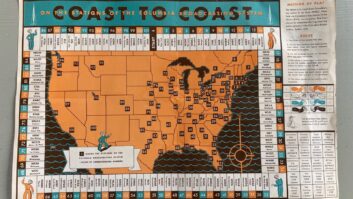
If you work in U.S. radio broadcasting, you are part of an increasingly exclusive club.
Recent data on employment trends from the U.S. Bureau of Labor Statistics show substantial job shrinkage in the industry over the past quarter century, which likely won’t surprise many people reading this.
The number of radio broadcasting jobs fell about 27 percent from 1990 through early this year, according to data accumulated by the government bureau; radio is the darker red line in the graphic at right. There were 118,700 radio broadcasting jobs in 1990 compared to 86,800 through March 2016, the most recent month available.
A bureau report about jobs in media shows radio experienced a notable drop in jobs during the Great Recession, which the U.S. Department of Labor considers the period from late 2007 through early 2010. The industry shed nearly 20,000 jobs within three years.
The employment data do show gains in the number of jobs in broadcast television since 1990. Employment numbers of the two broadcast industries nearly mirrored each other through much of the 1990s, but currently there are 130,400 employees in television broadcasting, up from 113,000 in 1990, the government data shows (black line in chart).
No other media have experienced the jobs losses seen by newspapers, according to the government stats. There were more than 457,000 jobs in 1990 compared to just 183,200 remaining in March. That’s almost a 60 percent drop.
The statistics show employment in Internet publishing and broadcasting jumped remarkably though the period, from nearly 30,000 in 1990 to almost 200,000 earlier this year.
Each month the U.S. Bureau of Labor Statistics’ Current Employment Statistics program surveys approximately 146,000 businesses and government agencies, representing approximately 623,000 individual worksites, in order to provide detailed industry data on employment, hours, and earnings of workers on nonfarm payrolls, according to the department’s website.










